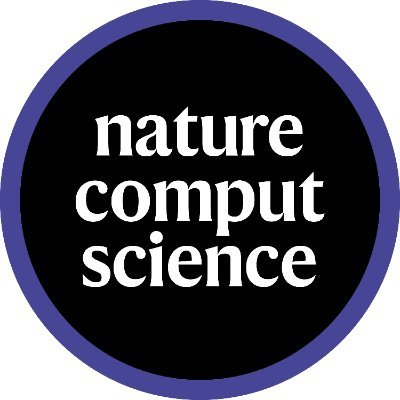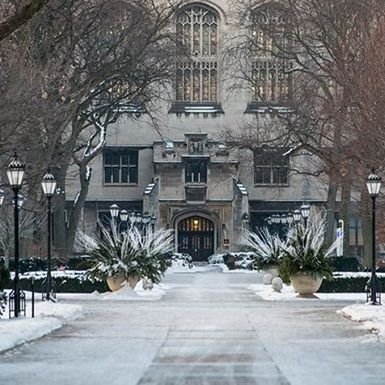
Milo Lin
@MiloLinLab
Followers
126
Following
50
Media
0
Statuses
42
Trying to find simple principles within biological complexity
Joined August 2021
Cool to see our deep distilling paper featured on the cover!
📢Our February issue is now live! Highlights include a method for automated algorithm discovery, a Comment on the opportunities in organic redox flow battery research, and a Perspective on computational drug development. 👉 https://t.co/5bQEETFusf
1
4
17
This position is subject to our new postdoctoral pay plan, which starts at 70K with incentives for mentored teaching and fellowships:
0
2
3
Our new work on (1) mapping genetic interactions in E. coli with titratable CRISPRi and then (2) using these data to build predictive gene expression -> growth rate models is out now in Cell Systems! https://t.co/rReHliM3lL Congrats to @CmbUtsw student and lead author Ryan Otto!
4
21
58
Can the intrinsic physics of multicomponent systems show neural network like computation? Out now: https://t.co/RNJS50MWtl Led by Constantine Evans w/ Jackson O'Brien, Erik Winfree. U Chicago summary: https://t.co/jgcH0GyGu9
6
90
317
Our deep distilling paper is out! It shows how far we can get training neural networks using modular symbolic reasoning, providing an alternative path to global loss minimization. It was such a fun and inspiring process working with @PaulJBlazek and @kvenkatesh75!
📢@PaulJBlazek and @MiloLinLab (@LHBioinf_UTSW) introduce an approach for automated algorithm discovery from data. The uncovered algorithms perform as well as or outperform human-designed algorithms in the discussed use cases. https://t.co/AcxKP9bX6m 👉 https://t.co/OIaWGxupoO
0
3
18
New paper out on using non-equilibrium circuit theory developed in our lab to show how the maximum efficiency of molecular machines depends on the chemical energy gradients inside cells: https://t.co/UP0UursGsO
royalsocietypublishing.org
Living systems use chemical fuel to process information, assemble structures and maintain fluxes. Many of these processes are dissipative: energy is consumed purely to maintain non-equilibrium...
0
0
12
Very excited to announce the launch of our new Biosynthetic Pathway Design Collaborative! My lab will be teaming up with @s_h_saunders, @MiloLinLab and @infphilo to build computational and experimental tools for biosynthesis https://t.co/EJ5Iz3d67m
@LHBioinf_UTSW
1
1
20
We're hiring - looking for a new postdoctoral fellow to join our collaborative efforts in synth biology! This postdoc with work with mself, @s_h_saunders, @infphilo and @MiloLinLab to advance new ideas in the computational design and experimental construction of biosynth systems.
We've launched a #TeamScience initiative and are #hiring a #PostDoc! Project details: https://t.co/K3RZbowJkg APPLY: https://t.co/wiLqKmMONM
#MicrobialSystemsBiology #COmputationalBiology #QuantitativeBiology #Bioinformatics @kimreynolds_lab @s_h_saunders @infphilo @MiloLinLab
2
6
9
Where do #gasvesicles live in a mammalian cell? The cytoplasm, as we can see w/bioorthogonal labeling w/FlAsH! Congrats to Erik Schrunk, co-sr auth @di_wu_ & co on a fractional labeling method that may also be useful for other protein nanostructures. https://t.co/r9tJH5XQBN
1
9
67
Come join us! We have two postdoc openings: one in biosynth pathway design/optimization, and another to examine how E. coli responds to transient perturbations in essential gene abundance. For details: https://t.co/6EkGZ5hLwf Please RT 🙏!
0
10
16
It was long suspected that protein aggregates generically favor an ordered structure (e.g. amyloid) rather than a disordered amorphous phase. Our new work showing why this should be true regardless of sequence: https://t.co/atUNZT6xSs
onlinelibrary.wiley.com
Proteins can aggregate into disordered aggregates or ordered assemblies such as amyloid fibrils. These two distinct phases serve differing roles in function and disease. How protein sequence determ...
0
4
21
Congratulations to lab member and @CmbUtsw student Ryan Otto on BEST TALK at the @LHBioinf_UTSW and @UTSWcomps retreat on Friday!
0
2
17
Congrats Greg!
🚨The BIG News🚨 Delighted to share that the Bowman lab will move to @Penn this summer, where I will serve as a Penn Integrates Knowledge (PIK) Professor with a joint appointment in the Perelman School of Medicine and the School of Engineering! @BB_UPenn @pennbioeng
1
0
3
It is #mitoawarenessweek! Learn how researchers in the @MishraLab are mapping out how our mitochondria are embedded into normal cellular function to understand how mitochondrial diseases occur. Their work could lead to new clinical tools and therapeutic options. #mitoawareness
2
3
28
Working on prediction, annotation, evolution or design of protein function? Incorporating computational function prediction into your experimental workflows? Submit an abstract to ISMB - Function! https://t.co/abv6psjmP2 In Madison, WI this July #ISMB2022 @iscb @iddux
0
7
4
Congrats Kim!
Super excited (and honored) to be this years junior faculty prize winner for the Biopolymers in vivo subgroup!! Can't wait to see everyone in a few hours. #bps2022 @LHBioinf_UTSW
0
0
1
Postdoc positions of #ComputationalNeuroscience at UT Southwestern aiming to understand the computational principle of #neuralcircuits. Strong quantitative background is preferred. Please circulate. @LHBioinf_UTSW @UTSWBrain
0
10
22
Computational Scientist https://t.co/MZHnlazl8w Computational Biologist I
0
1
0
I've been thinking about Andrew Wyeth's 1948 painting "Christina's World" and how art can enrich how we teach genetics. At first glance, it features a woman sitting in a pleasant field. Yet look closer, and you notice tension in her arms and hands.
37
248
1K










